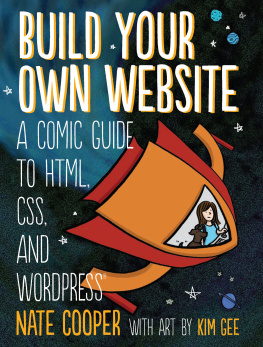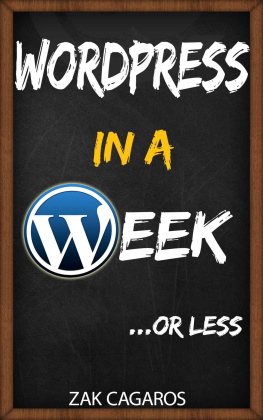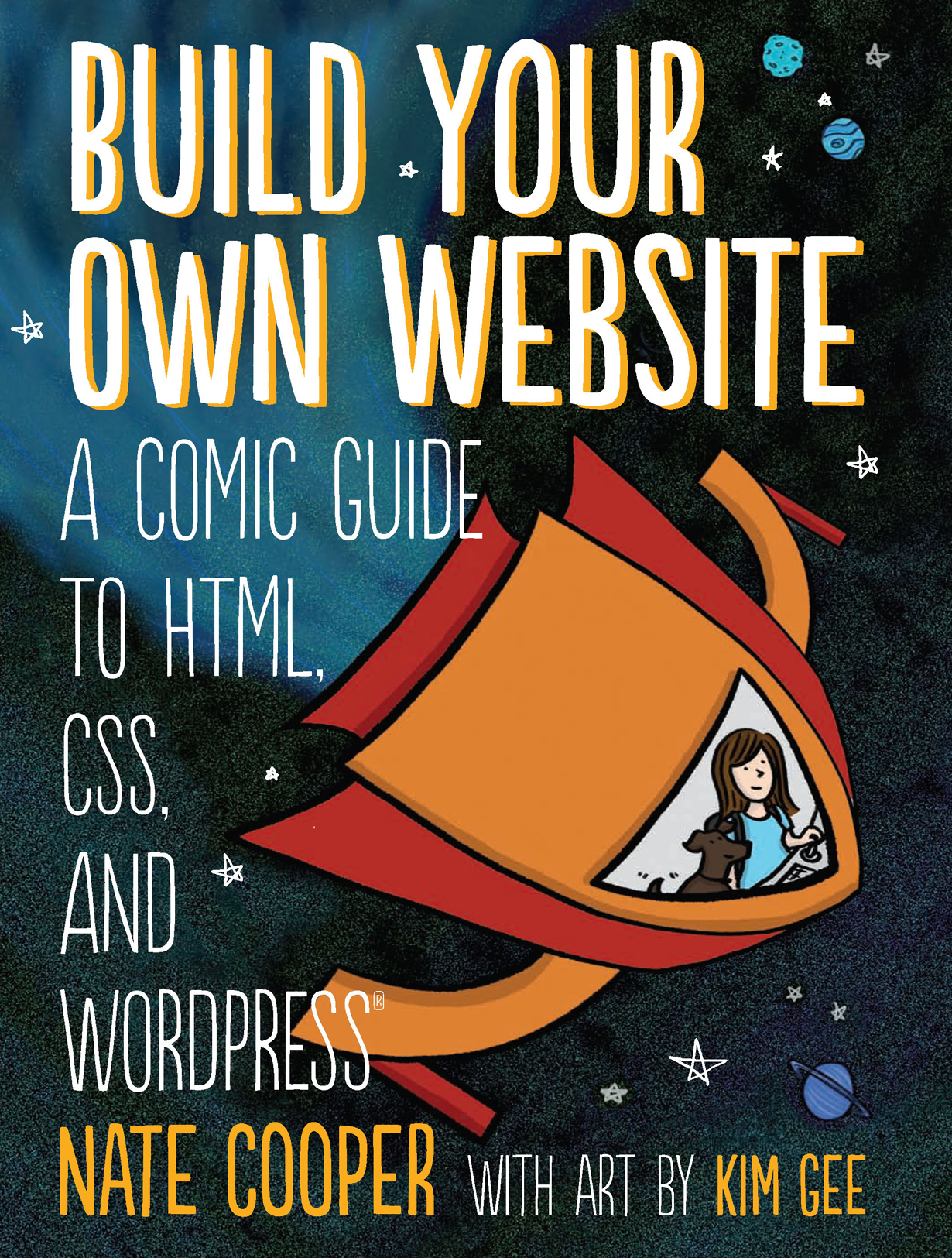Contents
- The
Tag and Alignment with CSS
- Using
s for Structure
Guide

Build Your Own Website

Build Your
Own Website
A Comic Guide to HTML,
CSS, and WordPress
Nate Cooper
with art by Kim Gee
San Francisco

Build Your Own Website.
Copyright 2014 by Nate Cooper.
All rights reserved. No part of this work may be reproduced or transmitted in any form or by any means, electronic
or mechanical, including photocopying, recording, or by any information storage or retrieval system, without the prior
written permission of the copyright owner and the publisher.
18 17 16 15 14
1 2 3 4 5 6 7 8 9
ISBN-10: 1-59327-522-6
ISBN-13: 978-1-59327-522-8
Publisher: William Pollock
Production Editor: Serena Yang
Developmental Editor: Tyler Ortman
Technical Reviewer: Shay Howe
Copyeditor: Rachel Monaghan
Compositor: Serena Yang
Proofreader: Kate Blackham
Indexer: BIM Indexing & Proofreading Services
For information on distribution, translations, or bulk sales, please contact No Starch Press, Inc. directly:
No Starch Press, Inc.
245 8th Street, San Francisco, CA 94103
phone: 415.863.9900; fax: 415.863.9950;
Library of Congress Cataloging-in-Publication Data
Cooper, Nate, 1980- author.
Build your own website : a comic guide to HTML, CSS, and WordPress / by Nate Cooper.
pages cm
Includes index.
ISBN 978-1-59327-522-8 -- ISBN 1-59327-522-6
Web sites--Design--Humor. 2.
Web site development--Humor.
I. Title.
TK5105.888.C66 2014
006.7--dc23
2014019597
No Starch Press and the No Starch Press logo are registered trademarks of No Starch Press, Inc. Other product and
company names mentioned herein may be the trademarks of their respective owners. Rather than use a trademark
symbol with every occurrence of a trademarked name, we are using the names only in an editorial fashion and to the
benefit of the trademark owner, with no intention of infringement of the trademark.
This book is not authorized or endorsed by the WordPress foundation or Automattic Inc. WordPress is a trademark of
the WordPress Foundation.
The information in this book is distributed on an As Is basis, without warranty. While every precaution has been
taken in the preparation of this work, neither the author nor No Starch Press, Inc. shall have any liability to any person
or entity with respect to any loss or damage caused or alleged to be caused directly or indirectly by the information
contained in it.
All characters in this publication are fictitious or are used fictitiously.

Contents

vi Contents
The
Tag and Alignment with CSS .

Contents vii

About the Author
Nate Cooper is a writer and consultant in New York City. After
working in retail marketing at Apple Inc., Nate has established
himself within the New York tech and entrepreneurial commu-
nity, writing on the subject of business strategy. His company
Simple Labs consults with businesses on WordPress implemen-
tation and content strategy, and regularly draws audiences for
events on the topics of communications and technology.
About the Illustrator
Kim Gee is an illustrator and graphic designer, currently living in New York City with her
boyfriend and her pet dog, Tofu. In 2010 she created her eponymous web comic and has
since self-published a graphic novel and mini-comic collecting her work.
Photo credit: Amanda Ghanooni


A Note from the Author
When I started my consulting business, I anticipated a demand for basic web skills in the
design community. Graphic designers whod been able to get by knowing just Photoshop,
Illustrator, and InDesign would tell me that their clients started expecting them to know
how to write HTML and CSS. As companies started shifting over from proprietary content
management systems to general CMSs like WordPress, the need for designers to have basic
tech knowledge grew. Today, designers must be able to create content both for print and for
the Web, and that means knowing HTML and CSS.
When seen against the medias transition from print to Web, perhaps this shouldnt
be shocking. What surprised me, however, is how much interest in these skills has spread
beyond the design and media communities. If youre as old as I am, you might remember a
time and place when office desks didnt always have computers on them. I remember visit-
ing my dads office at a community college while I was still in high school. He was considered
forward-thinking because he not only had a computer on his desk but he actually read his
own email, which was unheard of by certain college administrators.
We dont live in that world anymore. It didnt take very long for the Internet, desktop
computers, word processing, typing skills, and email to become standard tools for nearly
every single job in existence. Now, not only designers, but all sorts of professionals are
required to produce content for the Web using basic HTML and CSS. The Web is taking
over, but that doesnt mean learning about it has to be a pain.
My hope is that this book will appeal to those people feeling left behind as well as those
who want to get ahead. We live in an ever-changing world where the skills you learn today




















